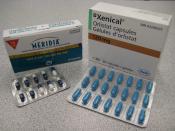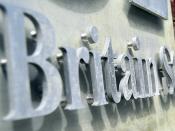An Investigating into Fitness, Diet, Obesity and Exercise
Introduction
My objectives are to find out what the connection is between fitness, diet, obesity and exercise and the nature of this connection.
Also, I will present what policies should be adopted by governments to improve the situation regarding the obesity problem in Britain.
Secondary Research
A major factor in a healthy diet is fat. Fats are made up of fatty acids and glycerol. Fats are normally described as saturated or unsaturated, depending on the proportion of the different types of fatty acids they contain.
Fats, at room temperature, are called oils. When fats absorb oxygen they spoil and become rancid. Fat has a huge impact on health.
Although it is not just a problem of excess fat. but where the fat is deposited. People who have excess weight (fat) around their middle ("apple-shaped") are at more risk of cancer, cardiovascular disease, type 2 diabetes, gallstones, arthritis and high blood pressure then those who have fat around their hips and thighs ("pear-shaped").
Because of this fat distribution, waist: hip ratios or waist circumference are now commonly measure. Generally, men, when their waist circumference reaches 37 inches are at increased risk of obesity related disease. For women, when their waist circumference reaches 32 reaches the risk increases. The risk of disease increases greatly at 40 inches for men and 35 inches for women.
Fat is the most concentrated source of energy. Decreasing consumption of foods which are high in fat can help to reduce energy intake. Alcoholic drinks, soft drinks, cakes, biscuits and some energy snacks can also contain a lot of energy, so consumption of these should be in moderation.
Reading the nutrition information on food labels can help when choosing foods which are lower in fat and energy.
The lack of...


